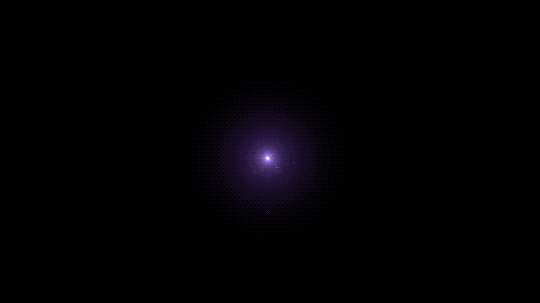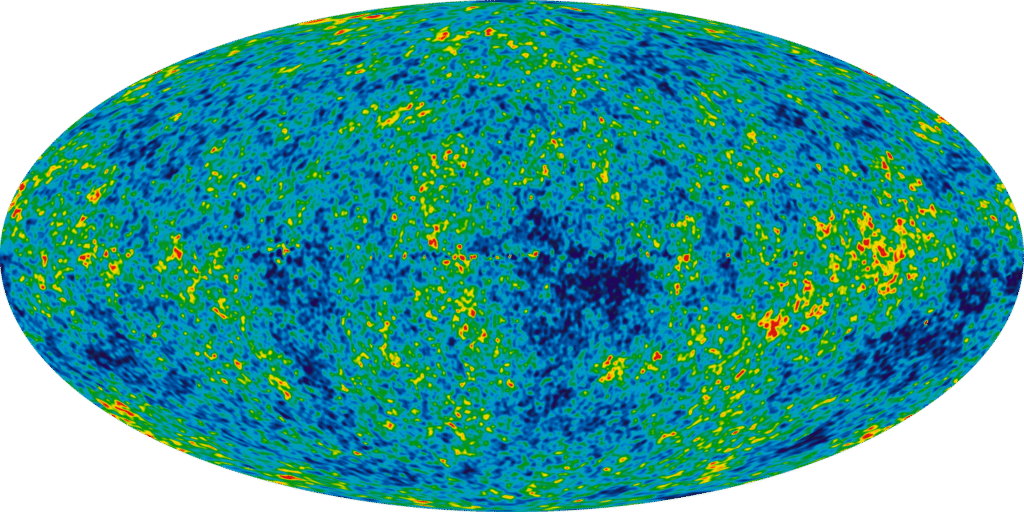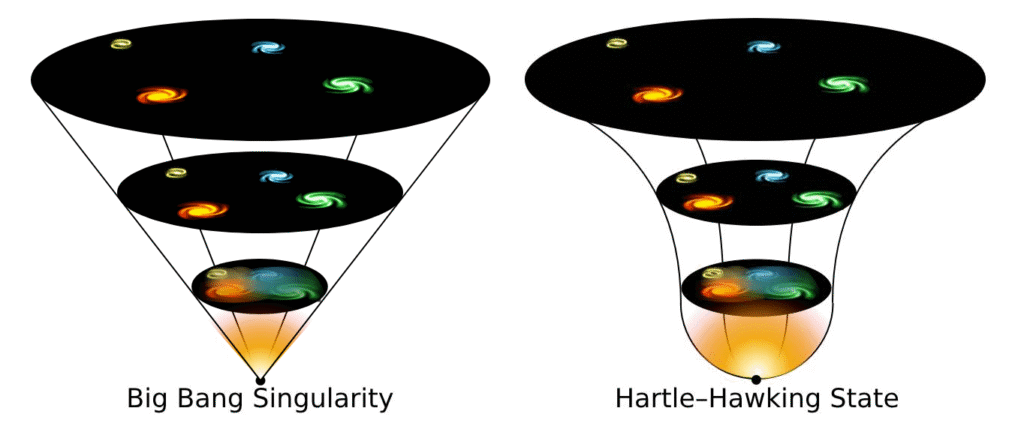
The Big Bang
Where did it all begin?
For as long as we’ve looked up at the night sky, we’ve asked the big questions: Where did all this come from? How did the universe begin?
Modern science answers this through the Big Bang Theory, which states that the universe began ~13.8 billion years ago from a state of extreme density, heat, and energy—a singularity where all known laws of physics break down. It is the leading scientific explanation for how the observable universe evolved from an initial state of extremely high density and temperature.
Let’s break down this amazing story in a way that makes sense.
First, What Exactly Was the Big Bang?
The Big Bang theory states that about 13.8 billion years ago, the entire universe we see today was crammed into an unbelievably hot, dense, and tiny point.
Immediately after that initial moment, the universe began a process of dramatic expansion and cooling that set the stage for everything we see today. This rapid expansion is called cosmic inflation. It grew from smaller than an atom to larger than a grapefruit almost instantaneously.
It wasn’t an explosion in space; it was the beginning of space and time itself.
Imagine a balloon with dots drawn on it. As you inflate it, the dots move away from each other because the balloon’s surface (space itself) is expanding. The Big Bang was like that, happening everywhere at once.
The Misconception of the Bang
The popular image of the Big Bang as a colossal explosion—a bomb detonating at a single point in the centre of a pre-existing void—is fundamentally incorrect. This picture is misleading because the Big Bang did not occur in space; it was the origin of space itself. Before this moment, there was no “outside” for it to expand into, and the very concepts of space and time as we understand them did not exist. The event happened everywhere at once. The early universe was a state of near-perfect uniformity, filled with immense density and pressure, but lacking the pressure differences that would drive a conventional explosion.
Clue 1: The Expanding Universe (Lemaître & Hubble)
Our first big clue came not from a telescope, but from math. In 1927, a Belgian priest and physicist named Georges Lemaître used Einstein’s new theory of gravity and realised the universe couldn’t be static—it had to be either growing or shrinking. He proposed it all started from a “primaeval atom.”
Just a few years later, American astronomer Edwin Hubble was observing distant galaxies. He noticed something strange: almost all of them were moving away from us. And the farther away they were, the faster they were moving! The only explanation was that the entire fabric of the universe was expanding. Lemaître was right.
If the universe is expanding now, it means that if we rewind time, it must have been smaller in the past. Rewind far enough, and everything must have started from a single point.

Clue 2: The Cosmic Microwave Background or the “Echo” of Creation

If the early universe was incredibly hot and dense, that heat should have left behind a faint, leftover glow—an “afterglow” spread across the entire cosmos.
In 1964, two scientists stumbled upon this echo completely by accident. They detected a faint, mysterious microwave radiation coming from every direction in the sky. This wasn’t noise from their equipment; it was the Cosmic Microwave Background (CMB), the universe’s baby picture. It’s the oldest light in the universe, a perfect snapshot of what things looked like just after the Big Bang.
Clue 3: Big Bang Nucleosynthesis
The Big Bang theory also makes a specific prediction: in the first few minutes, the universe was so hot it was like a nuclear furnace. It was briefly a perfect environment for “cooking” the first, simplest elements.
This process, called Big Bang Nucleosynthesis, predicts a specific recipe for the early universe: about 75% hydrogen, 25% helium, and tiny traces of lithium. When we look at the oldest stars and galaxies, that’s exactly what we find. The chemical composition of our universe is another powerful confirmation.
So, What About the “Dot”? (The Singularity)
You might be wondering about that tiny point where it all began. Physicists call this the singularity. It’s a point in spacetime where our current laws of physics completely break down.

In a singularity, the entire mass and energy of the universe were squished into a region of zero volume and infinite density. Asking what came “before” the Big Bang is like asking what’s “north of the North Pole”—the question doesn’t make sense because time itself began at that moment. The singularity is less of an answer and more of a signpost that tells us where our current knowledge ends and where we need a new theory (like a theory of quantum gravity) to understand more.